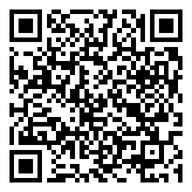Overview
Arthrogryposis Multiplex Congenita (arthrogryposis or “AMC”) is a term used to describe a person born with multiple stiff joints. While there are over 300 specific diagnoses that fall under this definition, the most common type is a condition called amyoplasia. Arthrogryposis is a rare disorder, occurring in 1 in 3000 live births. True amyoplasia occurs in about 1 in 10,000 live births. Children with amyoplasia are born with very little muscle in their arms and/or legs resulting in stiff joints and difficulty moving. The condition can range from mild to severe, but many children can improve function with help.About 93% of cases are neuropathic (related to nerve problems) with abnormal anterior horn cells in the spinal cord. About 7% are myopathic (related to muscle problems), associated with muscle diseases like congenital muscular dystrophies, congenital myopathies, intrauterine myositis, and mitochondrial disorders.
Symptoms
Children with AMC may be diagnosed before birth on ultrasound or shortly after birth. Symptoms vary depending on the specific diagnosis but commonly include:- Stiff joints of the arms and/or legs (joint contractures) All 4 limbs are affected in 84%, just upper extremities in 11 %.
- Head and neck normal
- Normal or above average intelligence
- Limited fetal movement during pregnancy
- Small size
- Decreased amount of muscle
- Absent skin creases at joints
- Delayed development such as sitting up or standing
- Abnormalities of feet (ex: clubfoot)
- Characteristic birth mark on the face
- Hips are often flexed and dislocated
- They sometimes have scoliosis
Distal arthrogryposis is an important type of arthrogryposis. In these children, the knees and elbows are relatively spared, and the hands and feet more affected. There are more than 20 different subtypes of distal arthrogyposis, and the face and neck be affected in some.
Evaluation & Examination
Every child with AMC is unique. Since there are so many conditions that can lead to arthrogryposis, an accurate diagnosis is important to help direct treatment. Often a geneticist will evaluate the child to help determine a diagnosis. About 30% of children with AMC have an identifiable genetic cause.Your doctor will look at your child’s arms and legs, muscle strength and joint range-of-motion to determine the specific needs of your child. The doctor will check the range of motion at each of the joints and watch to see what muscles your child can move on their own.
Other tests
- In addition to clinical findings, workup should include Birth history (oligohydramnios, Streeter’s dysplasia), maternal exposures and illnesses, family history
- SMA newborn screen
- CK
- Skeletal survey with xrays or ultrasounds
- MRI brain and spine
- Comprehensive NM disorder panel (Invitae): muscular dystrophies, myopathies, and congenital myasthenic syndromes.
Treatment
Without treatment arthrogryposis can be limiting, but with appropriate and early intervention many children can become more functional. Treatment usually includes a team of therapists (physical, occupational, and speech), orthotists (brace makers), and orthopedic surgeons or physiatrists (muscle, bone, and joint doctors). Early on improvements can usually be made without surgery, but often surgery is necessary to improve function.Special Treatment Options
When a child with arthrogryposis is very young, your doctor may use a combination of casts and braces to help improve and maintain joint mobility. Braces are a very important part of treatment. The stiff joints in arthrogryposis tend to want to become stiff again after they have been loosened. The braces help to maintain the joint and muscles in a stretched-out position, which sometimes avoids the need for surgery.
Operative Treatment
Recommended ages for specific surgeries vary depending on the particular problem and preference of the doctor. Most children with arthrogryposis will need some form of surgery to improve the position and functionality of the arms and legs. There are soft tissues procedures that address tightness coming from muscles, ligaments and joint capsules. There are also bony procedures that cut and change the alignment of the limbs to place them in a more useful position.Prognosis
Every child with AMC is unique. Determining the future of a child with arthrogryposis in large part depends on the specific diagnosis and severity of the condition. Still, many of these children surpass expectations. Without intervention, AMC can be disabling, but functional improvement can be achieved with proper treatment. Many children with arthrogryposis are intelligent and use their intelligence to figure out ways to take care of themselves. 85% of patients walk by the age of 5 years old, most are independent with activities of daily living, and most are in regular classrooms.It is important for children with AMC to maintain a healthy weight. Without normal muscle and the ability to exercise like typically developing children, it can become difficult to lose excess weight once it is gained. Increased body weight may also make it more difficult to move and function due to weak muscle.
References:
Arthrogryposis Multiplex Congenita Support, Inc (AMCSI) is an organization the focuses on the well-being and education of persons affected by arthrogryposis. Their website is amcsupport.org. For more information, Arthrogryposis: A Text Atlas by Dr. Lynn Staheli is also an excellent resource that can be found for free at http://global-help.org/products/arthrogryposis_a_text_atlas/.
Condition QR Code:




 POSNA.org
POSNA.org